A breathtaking balloon ride, an underground adventure of ancient caves and churches, and good old Greek hospitality give Hanna Hussein a thrilling time in Turkiye
FRESH crisp air welcomes our arrival at dawn in a location somewhere between Avanos and Urgup, the two most-visited districts of Nevsehir province.
It is quite a bumpy drive along a dirt path, but the sunrise view at our destination makes the ride worth it, especially when the dark sky slowly lights up with an awesome mix of pink and blue.
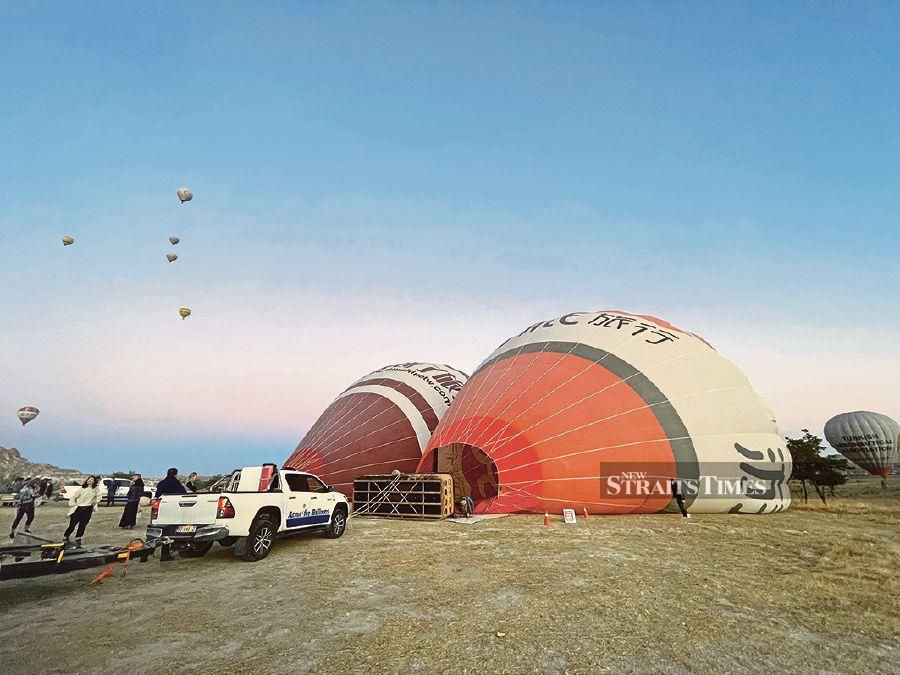
Overlooking the barren, rugged landscape, the morning sky is dotted with floating hot air balloons. And this is actually a typical morning scene in Cappadocia, Turkiye's tourist destination famed for its hot air balloon rides.
The Cappadocia hot air balloon ride is definitely on every tourist's must-try list, including mine as well as my colleagues from Kazakhstan, Kyrgyzstan, South Korea and the United Arab Emirates.
We are on a media familiarisation trip organised by the Turkiye Tourism Promotion and Development Agency.
VIEW FROM THE SKY
While waiting to board our hot air balloon, which is already half inflated, we take the opportunity to soak in the view at the launch site.
Around us, there are more than 10 hot air balloons getting ready for take off. It's quite interesting to see the ground crew working to set up the balloons, especially when they are being lit up by the roaring flames of burning propane.
About 15 minutes past 6am, the passengers are called over to board the basket. One by one, we climb into the basket that has four compartments. Each compartment can fit five people comfortably.
The pilot, Mahmet Cevizli, who has five years of flying experience with Atmosfer Balloons, begins the tour with a short safety briefing.
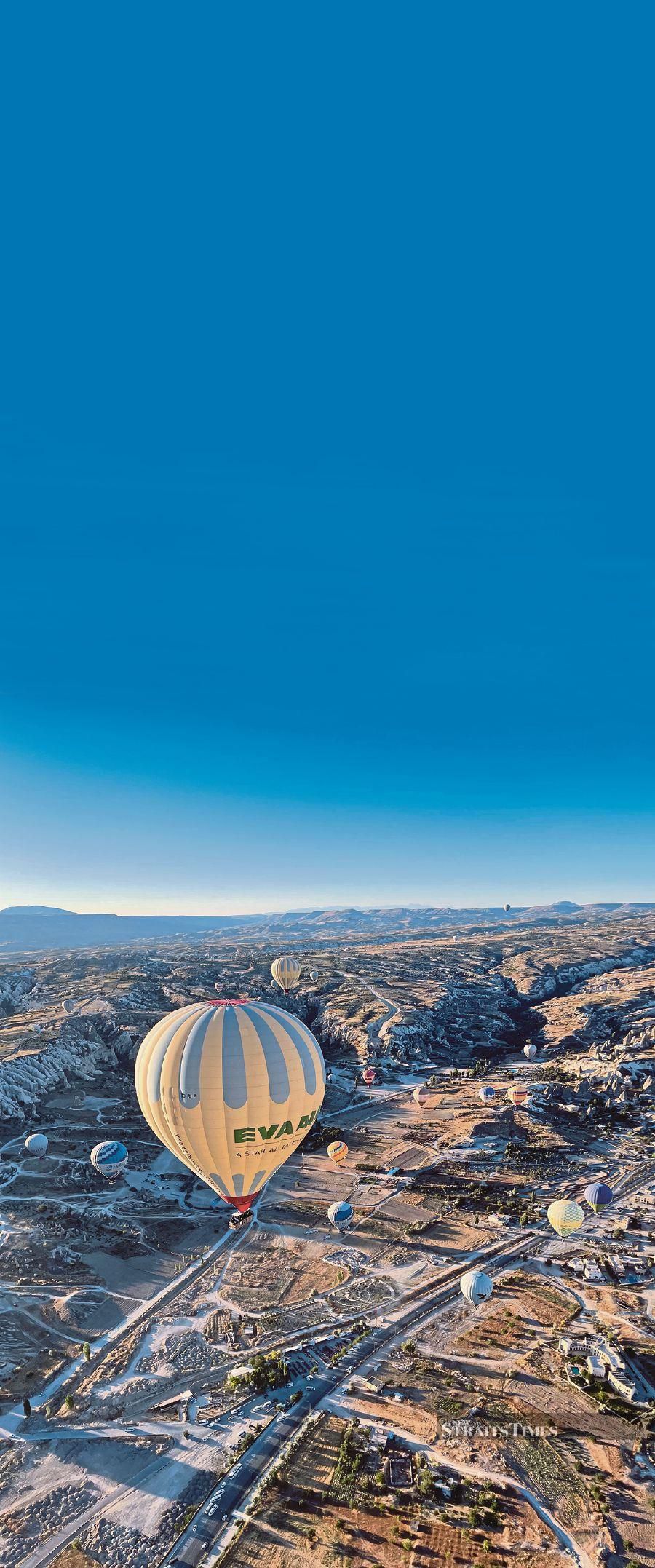
Soon after, our balloon starts to lift off the ground, slowly rising further and further up. It doesn't feel scary at all, as it floats smoothly and begins flying where the wind blows.
Looking down to the ground, the people below look like tiny ants, but the view up here is, oh, so breathtaking!
It's a jaw-dropping moment to see the sunrise behind the mountainous terrain at this height, especially with all the hot air balloons flying across the sky, surrounded by valleys and rugged landscape.
Once we are 500m off the ground, Mahmet gives some informative facts about the geological formations in the area.
This unique canyon landscape and unusual rock formations, he says, are the result of nature's forces from three volcanoes — the Erciyes, Hasan and Melendiz Daglar — that erupted some 30 million years ago.
People often ask, how does the pilot steer the hot air balloon? Well, although these balloons go where the wind takes them, the pilot can control the altitude by burning gas to go up, and allowing the air to cool to go down. In fact, Mahmet has actually taken us as high as 1,000 metres above the ground!
He also uses the turning vents to rotate the balloon 360˚ so passengers can enjoy a full panoramic view.
After almost an hour flying southwest across beautiful valleys, including Gerome and Rose Valleys, we reach the Love Valley, a popular spot known for its fairy chimneys.
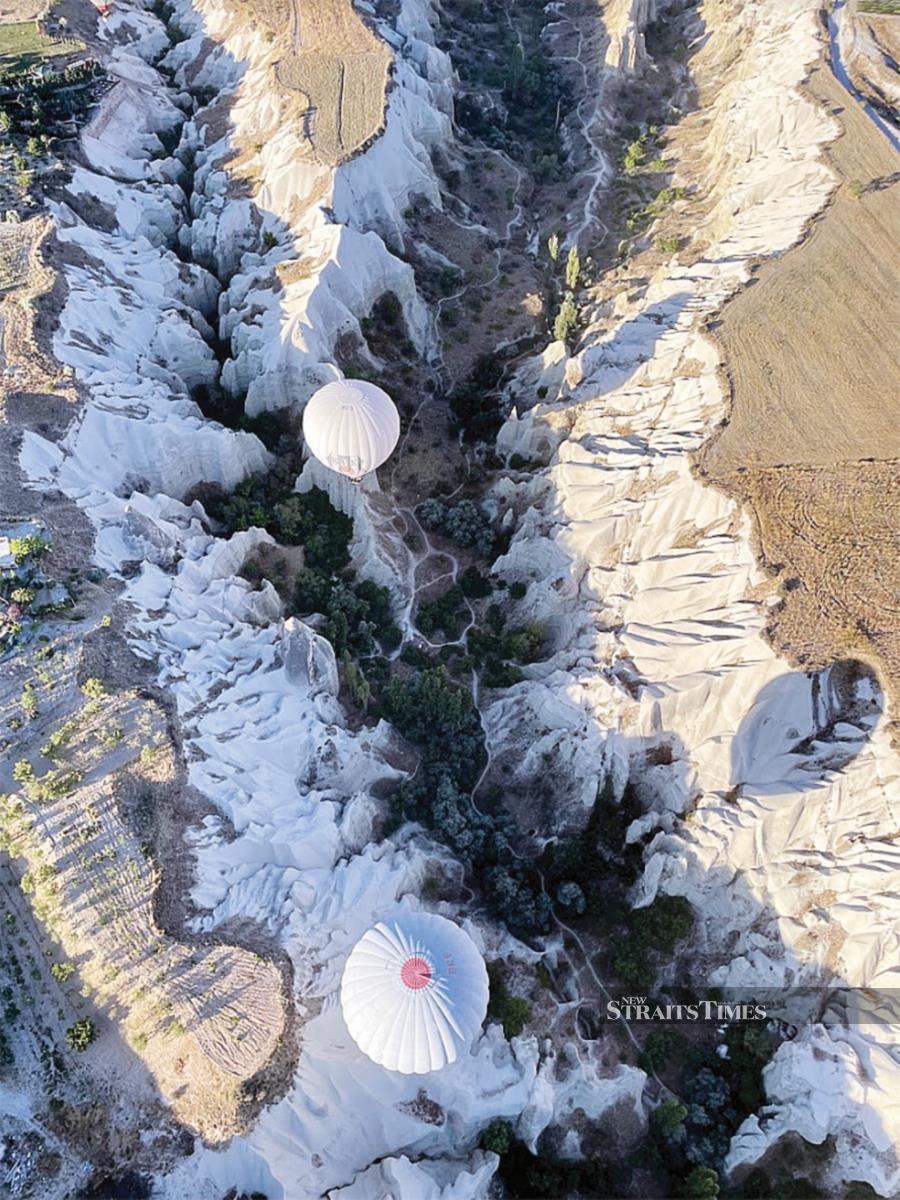
There, our hot air balloon slowly makes a descent. Not only does this allow us to see the beautiful valleys up-close, but it is also an indication that we are about to land anytime soon.
In about five minutes, we reach a very low altitude, where the base of the basket can almost touch the vineyard below.
"Go into your seated landing position and get ready everyone," Mahmet suddenly instructs.
All of us begin crouching and holding the ropes in front of us. I am prepared for a rough touchdown, but instead, the landing is really smooth with just a little skid.
The landing is done in a very professional manner — it's so smooth that it feels really safe and nobody was scared. Apparently, it is assisted by the ground crew, who pull down the balloon once it reaches near ground level and safely place the basket onto a trailer with the balloon still attached. The trailer is then moved to another location for the passengers to get off and join a celebration party organised by Atmosfer Balloons.
ROCK-CUT CHURCHES
After a very stimulating morning, we continue our day touring one of Cappadocia's most-visited places, the Goreme Open Air Museum.
Listed as a United Nations Educational, Scientific and Cultural Organisation World Heritage site back in 1985, the outdoor museum which used to be a settlement during the Byzantine period, houses the remains of Cappadocia's ancient churches and monasteries.
Our guide, Berkan Tasan, says this area has existed even before the second century AD, when Christian monks practised a life of seclusion.
Churches, chapels and cafeterias are available at every rock block, and you can still see some mural paintings of scenes taken from the Bible and the life of Jesus Christ.

Some worthy places to visit include the St Basil Chapel, where you can see ancient tombs lying side by side, as well as the arcosolium at the entrance, which presumably belongs to the people and their relatives who had contributed to the community.
However, the most impressive out of 15 churches in Goreme is the Dark Church, which is also known as Karanlik, as it is fully plastered and painted most probably around 1000 AD.
To get inside, you have to go through a winding tunnel that opens into a barrel-vaulted narthex.
It was named "Dark Church" because it receives very little light from the window in the narthex, which is why the colours of the painting inside are still beautifully preserved and bright.
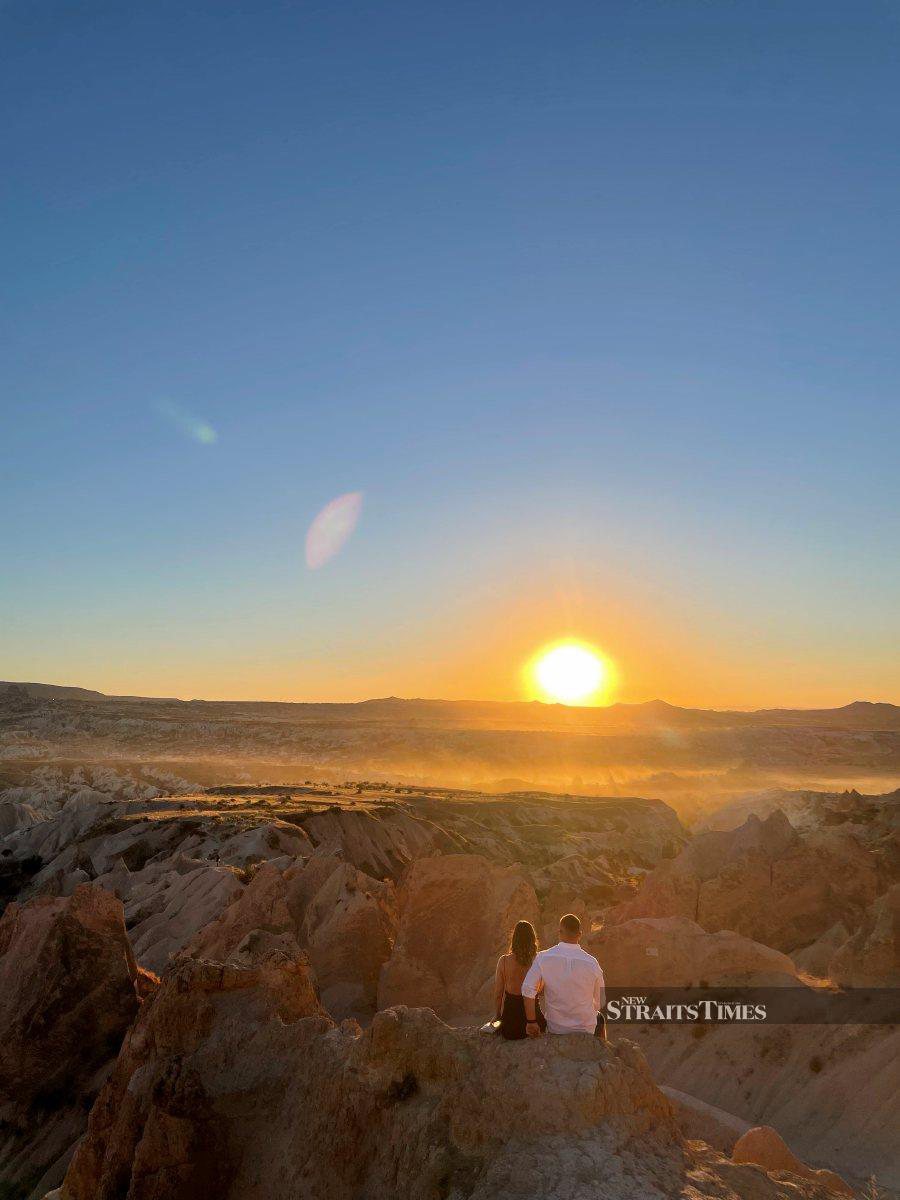
Besides ancient churches, Goreme Valley also offers one of the best places to watch the sunset and sunrise, especially at the Red Valley which is located in the middle of Goreme National Park.
If you just want to look around and don't mind missing the sunset, I highly recommend to go to the valley early as it gets crowded around 6pm. By then, most visitors would have picked the best spot, which is usually at the sharp sandstone ridges, to enjoy the view. This is one of Cappadocia's iconic photo spot.
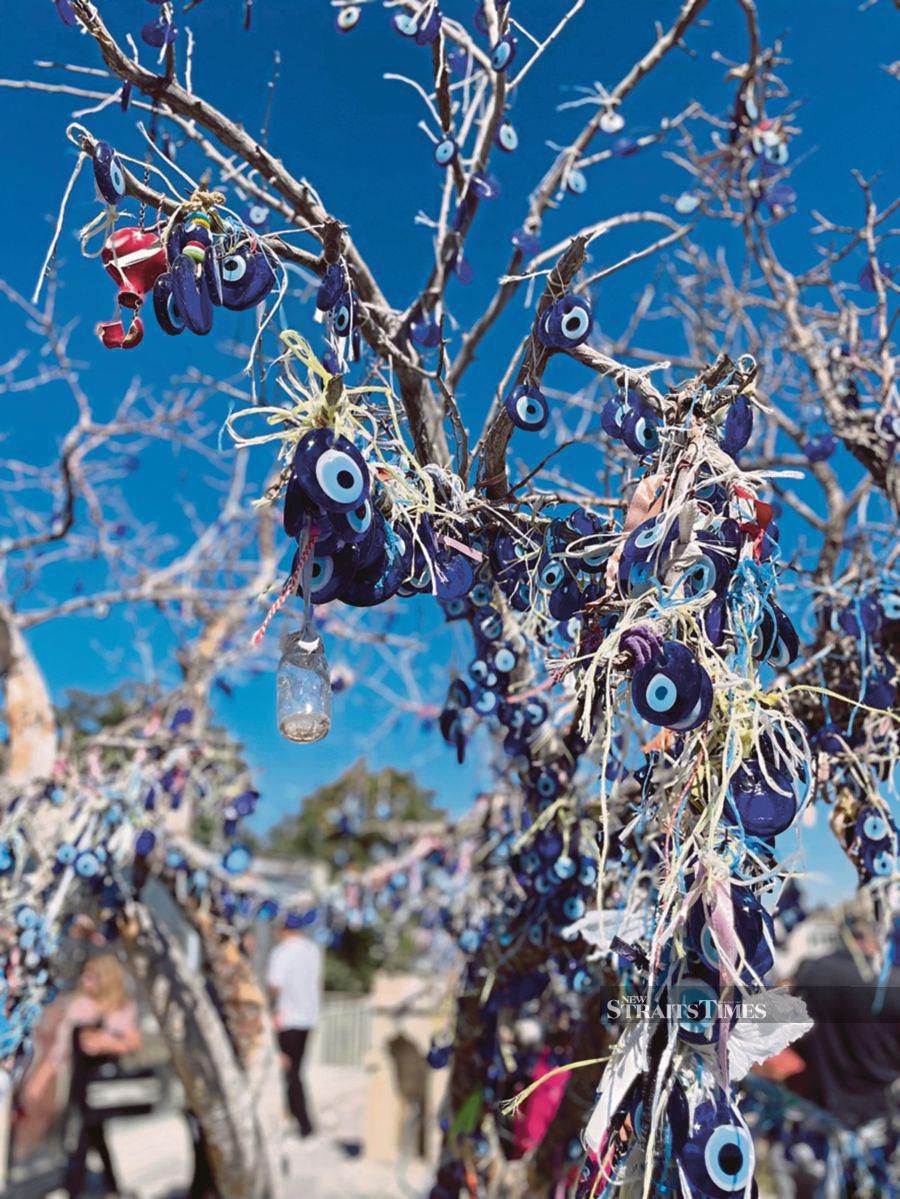
LIVING UNDERGROUND
Can you imagine yourself living in narrow, steep, underground dwellings, like ants in a colony? Honestly, I couldn't but I can't wait to find out at the Kaymakli Underground City about 30km from Urgup.
But, this is actually how the people of Kaymakli (or Enegup in ancient Greek) used to live.
It is unknown when exactly the settlement was built, but the underground city is constructed with nearly 100 tunnels and eight levels underground — all carved out of the soft volcanic stone that is, honestly, mind blowing!
It is believed to serve as a subterranean hideout for the Enegup people during the Byzantine era between 780 AD and 1180 AD from Muslim Arab raiders. Later, the caves were inhabited by Christians to protect themselves from Mongolian incursions in the 14th century.
According to Berkan, with a depth of 40m and believed to be the widest out of 36 underground cities in the region, Kaymakli used to house more than 5,000 people at a time.
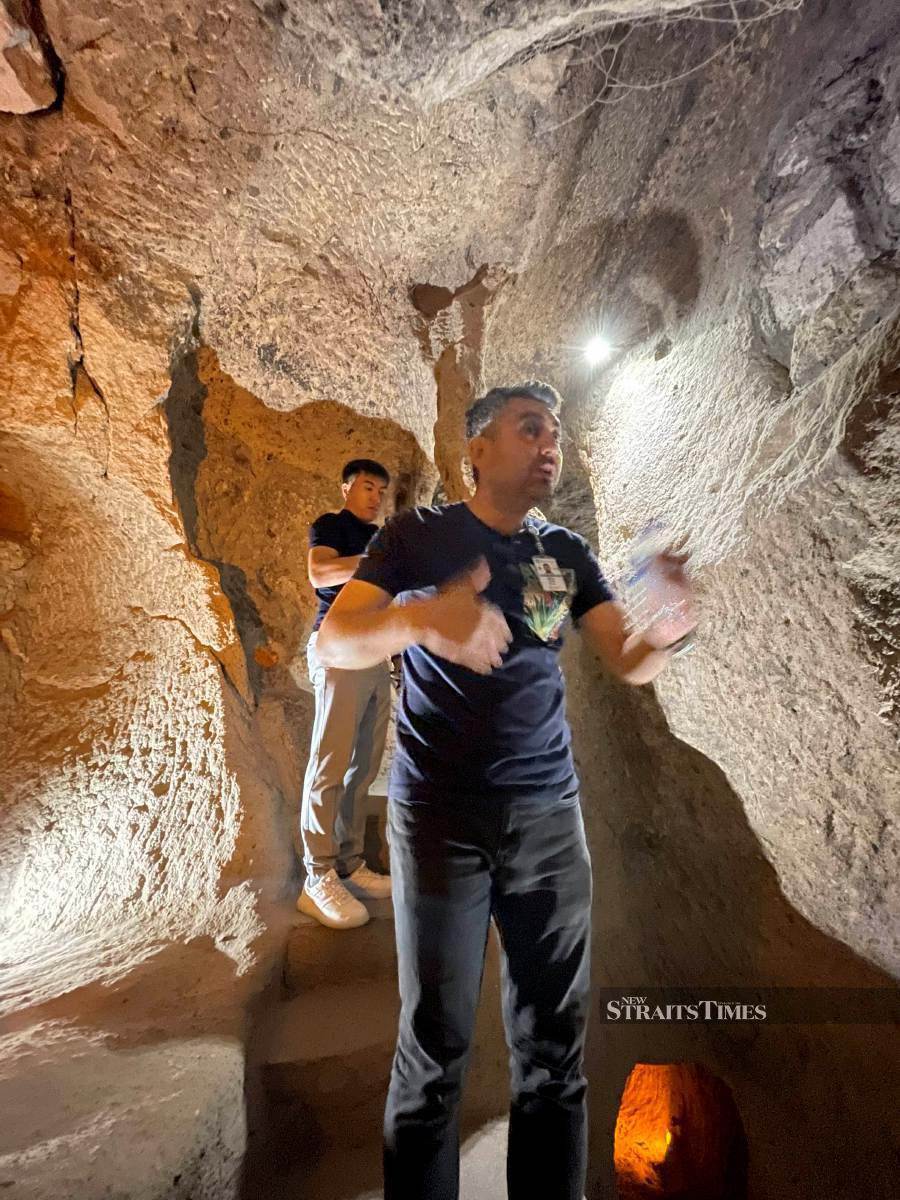
He also adds that the structure of the living quarters is arranged according to class, in which wealthier families live at the higher levels.
Today, four floors have been made accessible for visitors to explore with a minimum fee of 60 TL per entry.
Upon entering the cave-like entrance, we first see a small stable where people keep their livestock. There are also churches and living spaces for wealthy families on the first level.
On the second floor, there's another church with nave and two apses, a baptism stone and seating platforms. There are ancient graves on this floor, which probably belonged to religious people.
Getting from one place to another requires visitors to crawl and duck walk at really tight spaces and tunnels. In between the tunnels, there are small caves, probably serving as homes to the inhabitants.
Curious to know where the people cooked their meals, we head down another level where the food storage section, a wine cellar and communal kitchens are located.
Similar to the third floor, the fourth floor is also home to large storage rooms and private kitchens. In fact, there is a vertical ventilation shaft from this floor that passes all the way down to the lowest floor.
Honestly, I don't even feel suffocated as the ancient ventilation system still works like a charm today, consistently supplying clean air to visitors just like how it did to the old inhabitants living down below hundreds of years ago.
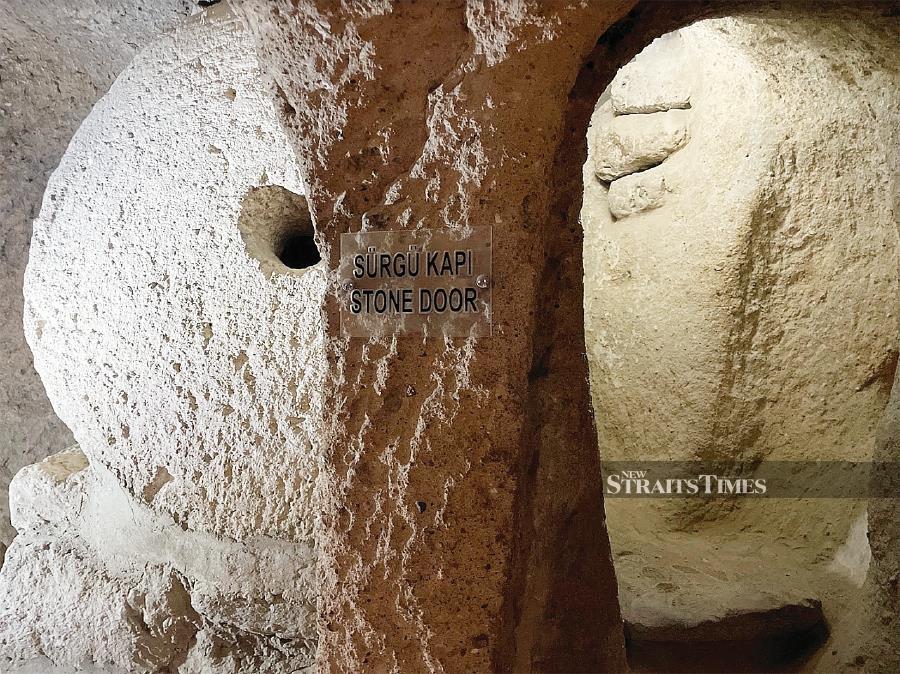
Another impressive feature of the city is how it kept their people safe from intruders. Well, the Kaymakli inhabitants constructed a massive round boulder that sits at the entrance to the main tunnel, which the men would roll and close when they were under attack.
Berkan adds that some of the caves in Cappadocia are still used to store local produce, such as potatoes, lemons and apples. As these caves have consistent temperatures of between 4°C to 12°C, the fruits and vegetables can be kept for more than three months and they still taste good.
OLD GREEK TOWN
Wanting a more photogenic experience, we head to Mustafapasa, a small town in Urgup district.
One of the best preserved features in this town is the beautiful traditional old doors of its houses, which are remarkably crafted by the Greeks in the 19th century.
Of course these doors aren't just doors with beautiful carvings and vibrant colours — they symbolise diversity depending on the architectural elements.
Mustafapasa, which is also known as the Ottoman-Greek Sinasos, is said to be a melting pot of civilisation throughout history, basically a home to various cultures, religions, languages and values.
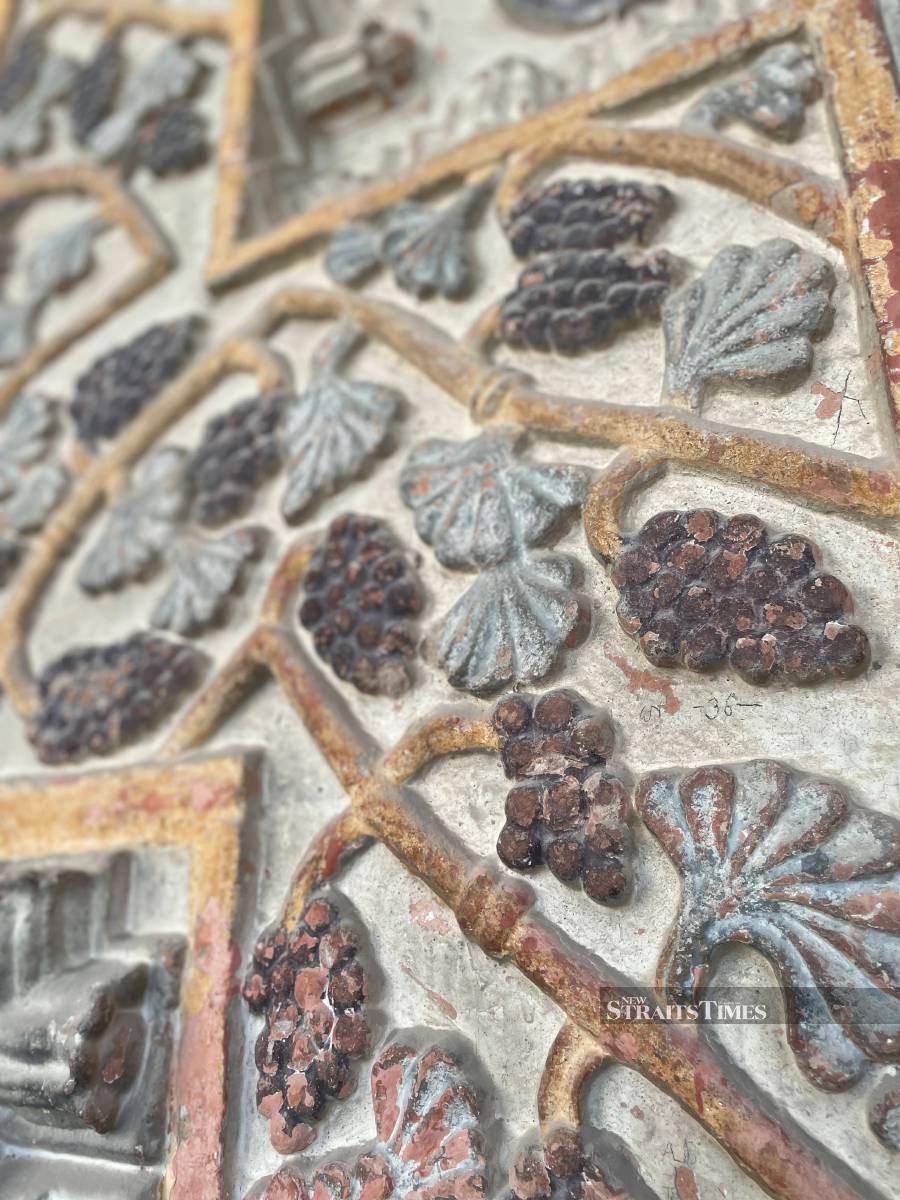
The town contains mansions, churches and mosques, which provide an insight on how people from different backgrounds can live together in peace for hundreds of years.
Our group gets to visit one of the most prominent churches in the heart of town — the Church of St Helena and Constantine.
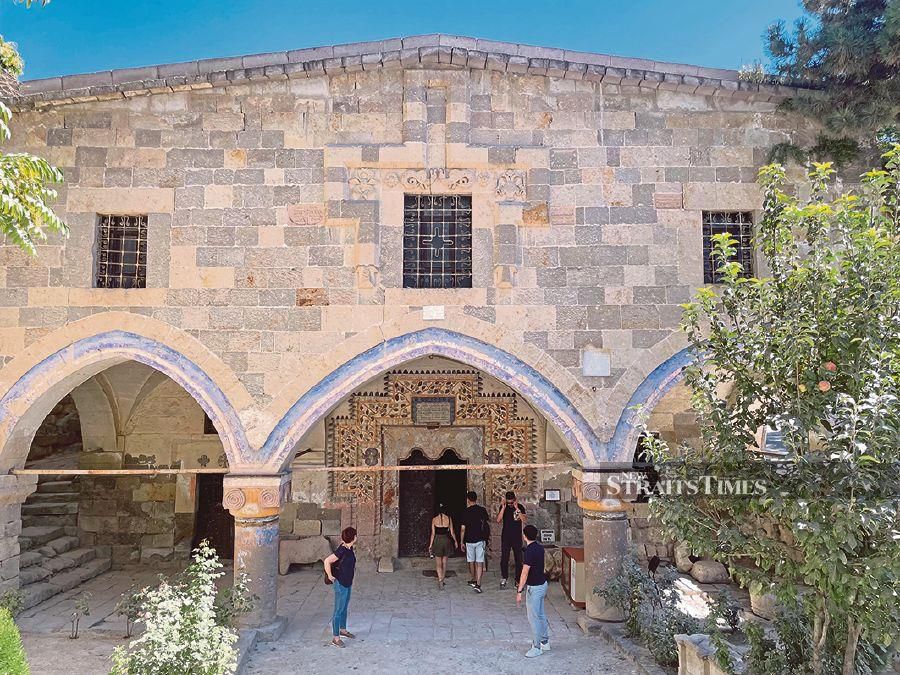
Built during the Ottoman period at a location that used to be a marketplace, the church has a stunning door and carvings of plants and fruits on its walls that mainly featured grapes, the fruit most widely grown in the region.
The beautiful town is perfect for a light stroll, so we walk past many quaint houses and "cave hotels" along its serene streets, before reaching the Old Greek House for lunch.
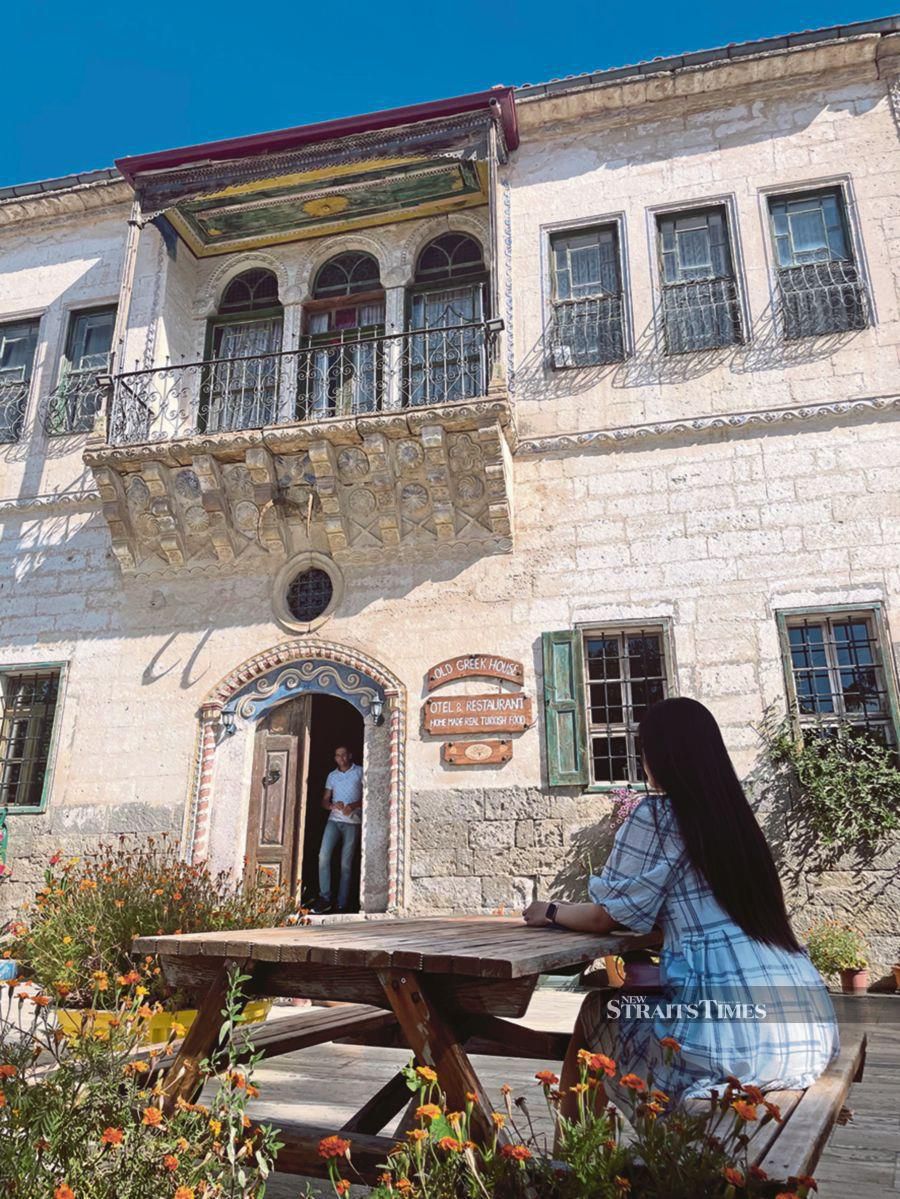
Built in the 1800s, the beautiful homely restaurant (and boutique lodging) is first owned by a Greek artist named Yorha Vasil before being sold to the Ozturk family back in 1938.
The current owner, a second generation member of the Ozturk family, has converted the house into a restaurant in 1992, which is famous for serving delicious Greek dishes prepared by his dear wife, Emine.

At the restaurant, we feast on oven-cooked meatballs potatoes, a specialty dish in Mustafapasa.
However, my favourite is the lentil soup and kiremit, which is a vegetarian dish comprising eggplants, potatoes and mushrooms in garlic tomato sauce served sizzling on a hotplate.
[email protected]Book Cappadocia' hotels and flight tickets with Malaysia Airline Promo Code to save more.




